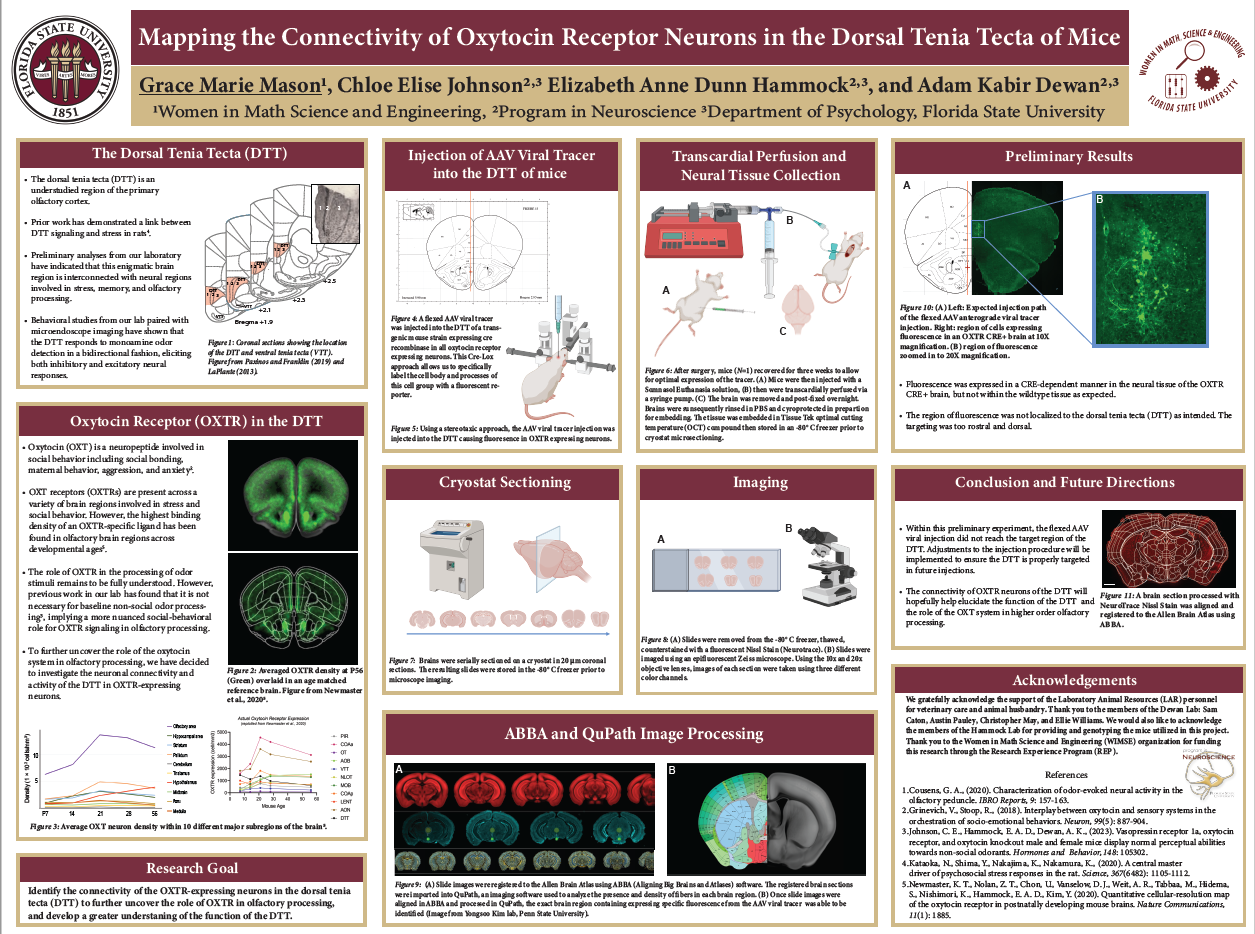Research Symposium
23rd annual Undergraduate Research Symposium, April 6, 2023
Grace Mason Poster Session 3: 2:45 pm - 3:45 pm/ Poster #174

BIO
I am a junior in the Behavioral Neuroscience major here at FSU from Citrus Springs, FL. I am a member of Women in Math Science and Engineering (WIMSE) and hope to continue onto graduate school for an M.S. in a Pathology Assistant program after graduation.
Mapping the Connectivity of Oxytocin Receptor Neurons in the Dorsal Tenia Tecta of Mice
Authors: Grace Mason, Dr. Adam DewanStudent Major: Behavioral Neuroscience
Mentor: Dr. Adam Dewan
Mentor's Department: Psychology Mentor's College: Florida State University Co-Presenters:
Abstract
The dorsal tenia tecta (DTT) is an understudied region of the primary olfactory cortex implicated in psychosocial stress responses. Analyses from our laboratory have indicated this region is interconnected with regions involved in stress, memory, and olfactory processing. The goal of this project was to analyze the connectivity of oxytocin receptor expressing neurons within the DTT. Previous studies determined the DTT exhibits a high density of oxytocin receptors. At postnatal day 7, oxytocin-receptor expression is higher than 95% of other brain regions (Newmaster et al., 2020). Since oxytocin plays a significant role in regulating endocrine, autonomic, and behavioral stress responses, mapping the connectivity of the DTT cell-type is a critical step to understand its function. A flexed AAV viral tracer was injected into the DTT of a transgenic mouse strain expressing cre recombinase in all oxytocin receptor expressing neurons. This Cre-Lox approach allows us to specifically label the cell body and processes of this cell group with a fluorescent reporter. After a three-week incubation period, mice were transcardially perfused, the brain was removed and serially sectioned on a cryostat. The resulting slides were counterstained with a fluorescent nissl stain (Neurotrace) and imaged using an epifluorescent microscope. Images were registered to the Allen Brain Atlas using ABBA (Aligning Big Brains and Atlases) software. The registered brain sections were imported into QuPath, and analyzed for the presence and density of fibers in each brain region. These connections will play a role in developing hypotheses regarding the function of oxytocin in the DTT.
Keywords: Oxytocin receptor, Dorsal Tenia Tecta, Oxytocin


